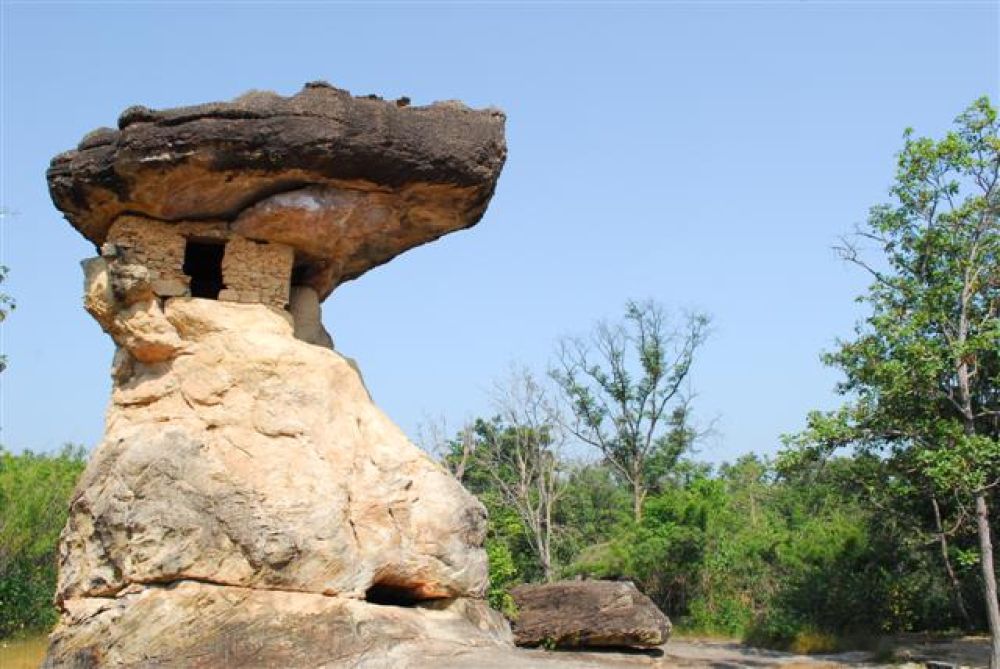

Phu Phra Bat Historical Park is a unique cultural and historical destination nestled in the heart of Isan, Thailand's northeastern region. This enchanting park is renowned for its natural beauty and is dotted with ancient sandstone formations, caves, and Buddhist structures that are harmoniously integrated with the surrounding landscapes. The roots of Phu Phra Bat Historical Park's allure can be traced back to various historical periods, each leaving a distinctive mark on the site.
Tourism in Phu Phra Bat Historical Park has been a developing story. While the region has been known to locals for generations, its opening up to the larger public and international audience is relatively recent. Since the 1970s and 1980s, there has been a concerted effort by the Thai government to promote cultural and heritage sites to boost tourism in the region.
It was officially declared a historical park by the Thai Fine Arts Department in 1991, a move that significantly elevated its status and piqued the interest of both domestic and international tourists. With its official recognition, the park has witnessed a steady increase in visitors, drawn by its archaeological and historical significance.
The park features remnants from prehistoric times, the Dvaravati period (6th to 11th century), the Khmer Empire (9th to 13th century), and up to the modern era. Rock paintings, pottery shards, and tools have been found here, offering a glimpse into the lives of its ancient inhabitants. As such, it has become a fascinating site for amateur historians, archeologists, and those interested in spirituality and religion.
Eco-tourism and Cultural Tourism are the latest trends influencing visitor experiences at Phu Phra Bat Historical Park. There is a growing interest in sustainable travel, with visitors seeking to learn about the local culture, traditions, and history while minimizing their environmental footprint.
Moreover, visitors are increasingly seeking authentic experiences that offer a connection with the past. This has led to an increase in guided tours that explore the historical context of the park's unique features, allowing tourists to appreciate the area's significance fully.
The rise of digital platforms and social media has also contributed to the park's popularity, with more travel bloggers and influencers highlighting its beauty and tranquility. The visual appeal of the park's rock formations and ancient Buddhist structures has made it a photogenic destination, appealing to a generation of travelers looking to discover and share hidden gems.
When planning a visit to Phu Phra Bat Historical Park, tourists should consider the local climate, which can be quite hot during the dry season. The best time to visit is between November and February when the weather is cooler and more comfortable for exploring the park.
The park is open daily, and there is a minimal entrance fee. English signage is limited, so hiring a local guide or doing some research beforehand may enhance the experience.
As a historical site, visitors are encouraged to respect the park's cultural and historical significance. This means adhering to local customs, such as dressing modestly and refraining from touching or climbing on the ancient structures.
Whether you're an avid history enthusiast, spiritual seeker, or simply an admirer of natural landscapes, Phu Phra Bat Historical Park offers an intriguing glimpse into Thailand's rich cultural tapestry, set against the backdrop of Isan's timeless rural charm.
On your next visit to Thailand, don't miss the chance to explore this captivating historical park and immerse yourself in the history and beauty of Isan.